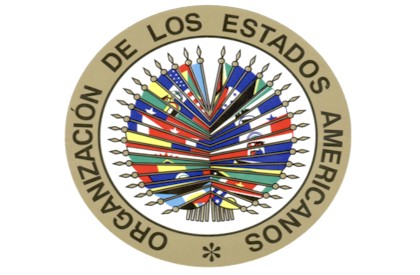Active Projects
Caribbean Hazard
Mitigation Capacity Building Program [CHAMP] (www.oas.org/cdera/champ/)
The OAS and the Caribbean Disaster
Emergency Response Agency (CDERA) are implementing a three-year program
to assist countries in the Caribbean region with the development of
comprehensive, national hazard vulnerability reduction policies and
associated implementation programs; and the development and
implementation of safer building training and certificate programs.
CDERA member states.
Hurricane-resistant
Home Improvement Program Strengthening (www.oas.org/cdmp/hrhip/)
In St. Lucia, the National Research and Development Foundation
(NRDF) offers a hurricane-resistant home improvement program (HRHIP)
for low-income earners. This program trains local builders in safer
construction, offers small loans to families wishing to upgrade their
homes and provides the services of a trained building inspector who
approves materials to be purchased, checks minimum standards. With the
assistance of the OAS, the World Bank and the Government of Brazil,
this NRDF safer housing program is being reviewed and strengthened
through the refinement of loan procedures, enhancement of the quality
control mechanism and the development of guidance documents. St.
Lucia.
Completed Projects
Caribbean Disaster Mitigation Project
(www.oas.org/cdmp)
The Caribbean Disaster Mitigation Project (CDMP)
was a joint effort of the OAS and USAID, with the aim of
establishing sustainable public/private disaster mitigation
mechanisms that measurably lessen loss of life, reduce potential
damage, and shorten the disaster recovery period. The CDMP was
completed in December 1999.
Antigua and Barbuda, Bahamas, Barbados, Belize, Dominica, Dominican
Republic, Grenada, Jamaica, Haiti, St. Kitts and Nevis, St Lucia,
St. Vincent and the Grenadines.
Post-Georges Disaster Mitigation
(www.oas.org/pgdm)
The Post-Georges Disaster Mitigation (PGDM)
project in Antigua/Barbuda and St. Kitts and Nevis had four primary objectives:
1. develop national hazard mitigation policies and plans, 2. strengthen building
practices, 3. strengthen national emergency shelter policies and programs, 4.
support public information programs on hazard mitigation. The PGDM was
implemented by the OAS, with funding from the USAID-Jamaica Caribbean Regional
Program (USAID-J/CAR), and was completed in September 2001.
Antigua and Barbuda, St. Kitts and Nevis.
Coastal Infrastructure Design, Construction
and Maintenance training program (www.oas.org/cdcm_train)
The Coastal Infrastructure Design,
Construction and Maintenance (CDCM) training program aimed to reduce
the long-term vulnerability of coastal infrastructure in the project
countries and in the broader Caribbean region by expanding the
capacity for appropriate design, construction and maintenance of
coastal infrastructure works, through series of training courses
that were designed and implemented under the project. The CDCM
training program was funded by USAID-J/CAR, executed by the OAS and
implemented by the UWI Engineering Faculty, in collaboration with
Old Dominion University and the US Army Corps of Engineers' Coastal
Hydrology Lab. The project was completed in December 2001.
Antigua/Barbuda, Dominica, Grenada, St. Lucia, Trinidad and Tobago.
Caribbean Planning for Adaptation to Climate
Change (www.cpacc.org)
The Caribbean Planning for Adaptation
to Climate Change (CPACC) project supported Caribbean countries in
preparing to cope with the adverse effects of global climate change
(GCC), particularly sea level rise, in coastal and marine areas
through vulnerability assessment, adaptation planning, and capacity
building linked to adaptation planning. CPACC was funded by the
Global Environment Facility (GEF), implemented by the World Bank and
executed by the Organization of American States. The project was
completed in December 2001.
Antigua and Barbuda, Bahamas, Barbados, Belize, Dominica,
Grenada, Guyana, Jamaica, St. Kitts and Nevis, St Lucia, St. Vincent
and the Grenadines, Trinidad and Tobago.
The OAS assisted the World Bank
with: compilation of hazard mitigation good practices; assessment of actual practices in the region against these
good practices;
and preparation of the document "Natural Hazard Risk
Management in the Caribbean: Revisiting the Challenge". The
results of this work were
presented and discussed at the 2002 meeting of the Consultative Group for Caribbean
Economic Development, held in Washington in June 2002.
Antigua and Barbuda, British Virgin Islands, Dominica, Dominican Republic, Grenada,
Jamaica, St. Kitts and Nevis, St. Lucia, St. Vincent and the
Grenadines.
Water Level Observation Network for Latin
America (www.oas.org/ronmac/)
The Water Level Observation Network for
Latin America (RONMAC) provided support for the development and
improvement of the geodetic framework of Central America with direct benefits to
coastal resources management, coastal hazard mitigation and emergency planning,
design and development of coastal infrastructure and harbor facilities, and
coastal navigation. The RONMAC project was completed in December 2001.
El Salvador, Guatemala, Honduras and Nicaragua.
|

